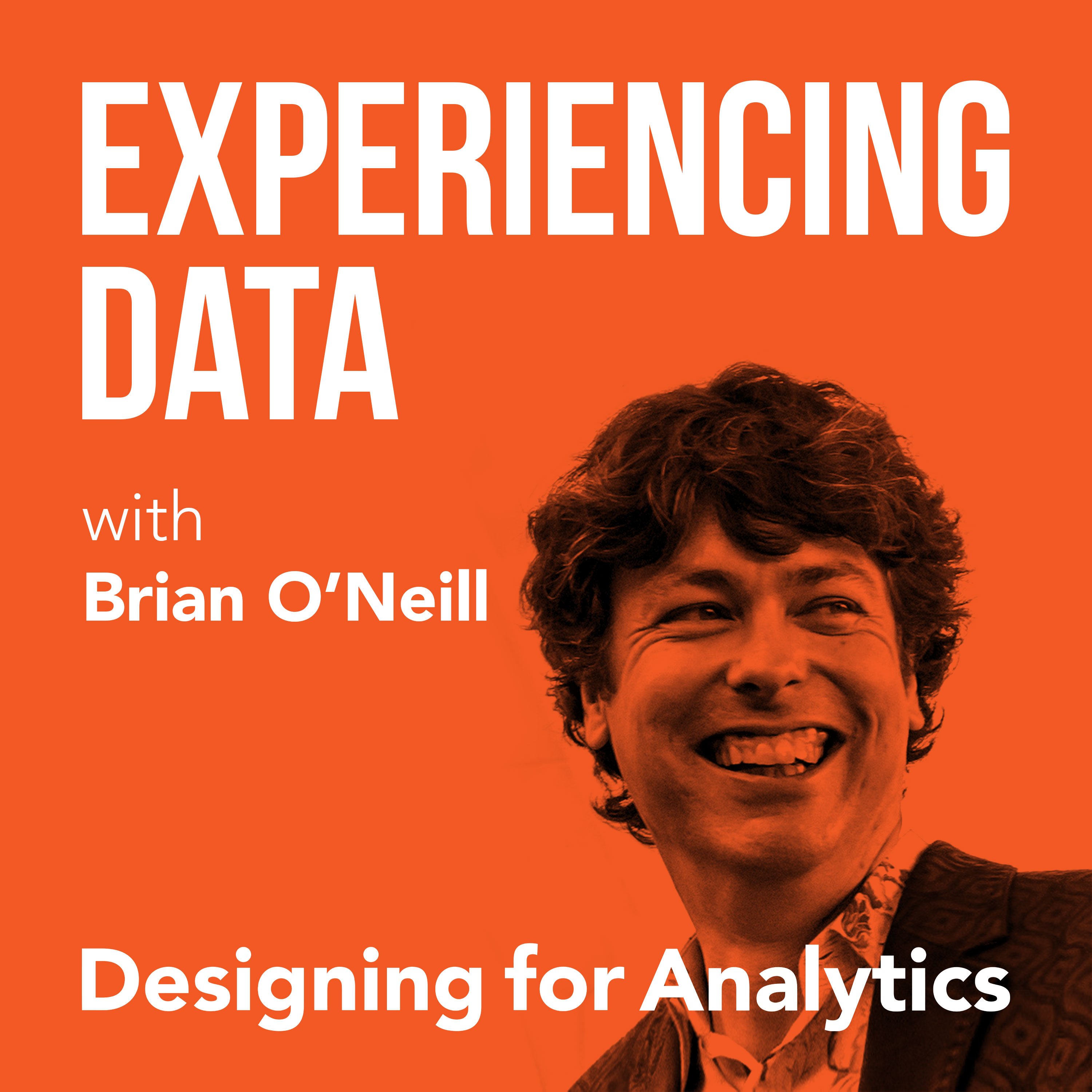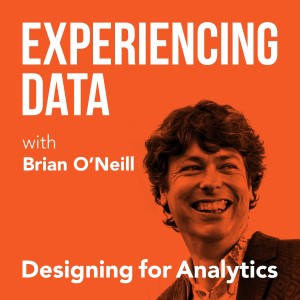

154.9K
Downloads
185
Episodes
Is the value of your enterprise analytics SAAS or AI product not obvious through it’s UI/UX? Got the data and ML models right...but user adoption of your dashboards and UI isn’t what you hoped it would be?
While it is easier than ever to create AI and analytics solutions from a technology perspective, do you find as a founder or product leader that getting users to use and buyers to buy seems harder than it should be?
If you lead an internal enterprise data team, have you heard that a ”data product” approach can help—but you’re concerned it’s all hype?
My name is Brian T. O’Neill, and on Experiencing Data—one of the top 2% of podcasts in the world—I share the stories of leaders who are leveraging product and UX design to make SAAS analytics, AI applications, and internal data products indispensable to their customers. After all, you can’t create business value with data if the humans in the loop can’t or won’t use your solutions.
Every 2 weeks, I release interviews with experts and impressive people I’ve met who are doing interesting work at the intersection of enterprise software product management, UX design, AI and analytics—work that you need to hear about and from whom I hope you can borrow strategies.
I also occasionally record solo episodes on applying UI/UX design strategies to data products—so you and your team can unlock financial value by making your users’ and customers’ lives better.
Hashtag: #ExperiencingData.
JOIN MY INSIGHTS LIST FOR 1-PAGE EPISODE SUMMARIES, TRANSCRIPTS, AND FREE UX STRATEGY TIPS
https://designingforanalytics.com/ed
ABOUT THE HOST, BRIAN T. O’NEILL:
https://designingforanalytics.com/bio/
Episodes

Tuesday Mar 07, 2023
Tuesday Mar 07, 2023
Today I’m chatting with Samir Sharma, CEO of datazuum. Samir is passionate about developing data strategies that drive business outcomes, and shares valuable insights into how problem framing and research can be done effectively from both the data and business side. Samir also provides his definition of a data strategy, and why it can be complicated to uncover whose job it is to create one. Throughout the conversation, Samir and I uncover the value of including different perspectives when implementing a data strategy and discuss solutions to various communication barriers. Of course, dashboards and data products also popped up in this episode as well!
Highlights/ Skip to:
- How Samir defines a data strategy and whose job it is to create one (01:39)
- The challenges Samir sees when trying to uncover and understand a company’s existing data strategy (03:39)
- The problem with the problem statements that Samir commonly encounters (08:37)
- Samir unpacks the communication challenges that lead to negative business outcomes when developing data products (14:05)
- An example of how improving research and problem framing solved a problem for Samir’s first big client (24:33)
- How speaking in a language your users understand can open the door to more exciting and valuable projects (31:08)
Quotes from Today’s Episode
- “I don’t think business teams really care how you do it. If you can get an outcome—even if it’s quick and dirty. We’re not supposed to be doing these things for months on end. We’re supposed to be iterating quickly to start to show that result and add value and then building on top of that to show more value, more results.” — Samir Sharma (07:29)
- “Language is so important for business teams and technical teams and data teams to actually be able to speak a common language which has common business constructs. Why are organizations trying to train 20,000 people on data literacy, when they’ve got a ten-person data team? Why not just teach the ten people in the data team business language?” — Samir Sharma (10:52)
- “I will continuously talk about processes because there’s not enough done actually understanding processes and how data is an event that occurs when a process is kicked off. … If you don’t understand the process and how data is enabling that process, or how data is being generated and the trigger points, then you’re just building something without really understanding where I need to fit that product in or where I need to fit that workflow in.” – Samir Sharma (11:46)
- “But I start with asking clear questions about if I built you this dashboard, what is the decision you’re going to make off the back of it? Nine times out of ten, that question isn’t asked, if I build you this widget on this dashboard, what decision or action are you going to make or take? And how is that going to be linked back to the map that strategic objective? And if you can ask that question, you can build with purpose.” – Samir Sharma (19:27)
- “You show [users] a bit of value, you show them what they’ve been dying to have, you give them a little bit extra in that so they can really optimize their decisions, and suddenly, you’ve got both sides now speaking a language that is really based on business outcomes and results.” – Samir Sharma (32:38)
- “If the people in that conversation are the developers on one side, the business team, and they’re starting to see a new narrative, even the developers will start to say, “Oh! Now, I know exactly why I’m doing this. Now, I know why I’m building it.” So, they’re also starting to learn about the business, about what impacts sales, and maybe how marketing then intertwines into that. It’s important that that is done, but not enough time has been taken on that approach.” – Samir Sharma (24:05)
- The thing for me is, business teams don’t know what they don’t know, right? Most of the time, they’re asking a question. If I was on the data team and I’d already built a dashboard that would [answer that question], then I haven’t built it properly in the first instance. What I’ve done is I’ve built it for the beauty and the visualization instead of the what I would class is the ugliness and impact that I need.” – Samir Sharma (17:05)
Links
- datazuum: https://datazuum.com/
- LinkedIn: https://www.linkedin.com/in/samirsharma1/
No comments yet. Be the first to say something!